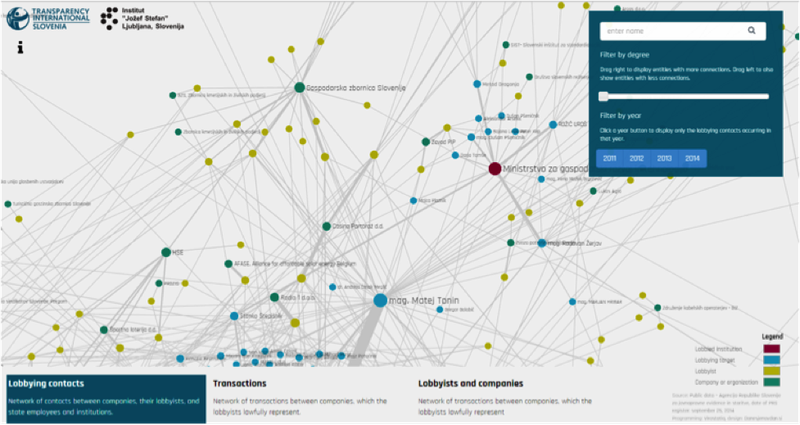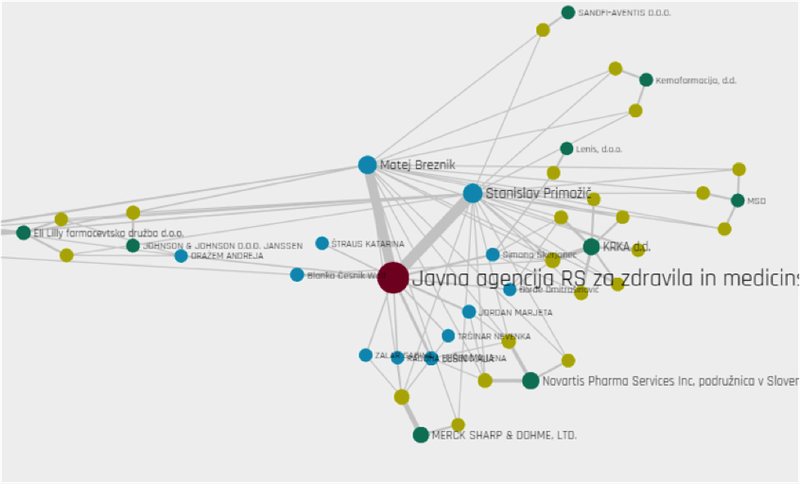OpenGov Voices: Who tries to influence policies in Slovenia — and who knows about it?

After years of struggle, Slovenia finally introduced new provisions to regulate lobbying within the country’s anti-corruption act in 2010. Compared to most other European countries, the regulation is relatively strong. Here’s why.
Lobbying laws are often criticized for their poor definitions, however, the Slovenian legislation managed to adequately cover the scope of lobbying and how lobbyists and lobby targets (or clients) should be defined. Most importantly, though, the law implements a dual approach: Those who lobby — only professional lobbyists, though — and those being lobbied both face reporting obligations. The legislation also separates professional and nonprofessional (or “in-house”) lobbyists, while exempting groups and individuals that are trying to influence the decision-making process to enhance the rule of law, improve their democracy or protect human rights.
The legislation is not without its limitations, though. The national chapter of Transparency International, TI Slovenia, published a report last year that highlights the weaknesses of the law, including the murkiness around some of the definitions, such as state- and municipality-owned companies, civil servants and the public sector — the regulation now excludes some of the important public agencies, such as the Health Insurance Institute of Slovenia and the Employment Service of Slovenia. Overall, a certain degree of transparency is provided by the regulation, however, the implementation in practice shows certain inconsistencies and difficulties that need to be addressed.

Good disclosure is the first step towards greater transparency, but it must be accompanied by the necessary tools to make lobbying data meaningful. TI Slovenia thus teamed up with the Jožef Stefan Institute and Virostatiq to launch a platform to get a better picture of the lobbying landscape. Kdovpliva.si (literal translation for “Who influences?”) tries to shine a light on the connections between lobbyists, companies, politicians and state institutions through visualizations on three different kinds of networks: lobby contacts as well as two different networks of transactions between the companies represented by lobbyists and public sector. The network on lobbying contacts has data from around 700 reports between 2011 and 2014. However, as not all contacts are reported (for example, nonprofessional lobbyists don’t need to report their activities at all), there’s still a significant black hole around who’s lobbying whom in Slovenia.
TI Slovenia gets all the contact reports from the Commission for the Prevention of Corruption as scanned PDF files that need to be converted into machine-readable formats before they can be visualized.

The connections (edges) are the actual links between lobbying entities (nodes), aka lobbyists, lobby targets, lobby clients and state institutions where lobby targets work. TI Slovenia uses a special weighing mechanism for the edges through the estimated loyalty between these entities, and draws the networks of major interest groups and state institutions who act as power centers. The example below depicts the network of the pharmaceutical lobby in Slovenia, centered around the Agency of the Republic of Slovenia for Medicines and Medical Devices, with companies like Merck, Novartis, Eli Lilly or Aventis playing a major influential role.
The platform provides other details too, such as a list of all companies (where the font size indicates the frequency of contact), lobbying purposes and a timeline of lobbying contacts. Users can also filter by year and the frequency of connections.
In the upcoming months, TI Slovenia and its partners plan to make some further improvements to the platform by adding data on laws and bills, thus creating a legislative footprint (a comprehensive public record of lobbyists’ influence) on laws and regulations. The platform will thus provide a way to better analyze corruption risks embedded in the legislative process by mashing up the different datasets. Hopefully, this tool will enable policy researchers, think tanks, NGOs, journalists, citizens and other stakeholders to access and use the data for evidence-based advocacy.
Interested in writing a guest blog for Sunlight? Email us at guestblog@sunlightfoundation.com

